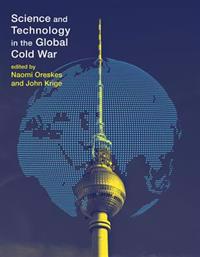American Hegemony and the Postwar Reconstruction of Science in Europe (Övrig)
avJohn Krige
ISBN: 9780262612258 - UTGIVEN: 2008-09-05In 1945, the United States was not only the strongest economic and military power in the world; it was also the world's leader in science and technology. In American Hegemony and the Postwar Reconstruction of Science in Europe, John Krige describes the efforts of influential figures in the United St[...]
Nasa in the World (Pocket)
avJohn Krige, Angelina Long Callahan, Ashok Maharaj
ISBN: 9781137340924 - UTGIVEN: 2013-08-21Since its inception, NASA has participated in over 4,000 international projects, yet historians have almost entirely neglected this remarkable aspect of the agency's work. This groundbreaking work is the first to trace NASA's history in a truly international context, drawing on unprecedented access [...]
American Foundations and the Coproduction of World Order in the Twentieth Century (Inbunden)
avJohn Krige, Helke Rausch
ISBN: 9783525310434 - UTGIVEN: 2012-06English summary: This volume studies the links between politics and science during the 20th century, based on the example of the large US foundations. If the 20th century can be regarded in many ways as the American Century, then the large US foundations such as Carnegie, Rockefeller and Ford played[...]
Science and Technology in the Global Cold War (Pocket)
avNaomi (EDT) Oreskes, John (EDT) Krige, Naomi (EDT) Oreskes
ISBN: 9780262526531 - UTGIVEN: 2014-11The Cold War period saw a dramatic expansion of state-funded science and technology research. Government and military patronage shaped Cold War technoscientific practices, imposing methods that were project oriented, team based, and subject to national-security restrictions. These changes affected n[...]






